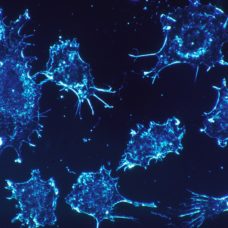In a bid to correct defective genes that cause inherited diseases, scientists and researchers from the U.S. attempted for the first time to modify human embryos using the gene-editing technique CRISPR-Cas9.
According to MIT Technology Review, the experiment is the first known attempt in the United States and has been carried out by an Oregon-based research team led by biologist Shoukhrat Mitalipov of Oregon Health and Science University.
The experiment resembles something taken out of a dystopian movie except that this one is happening in the real world. While this is not the first attempt at altering human genes for medical studies, it raises grave concerns about its ethical and safety implications.

Imagine waking up to the world one day where ‘designer babies’ engineered with genetic enhancements are being created in laboratories.
In order for humanity to take the next step towards the stars, we may have to engineer a huge population of “perfect” people.
It was once a fantasy, but may not be anymore.
Science has shown tremendous progress over the years, and these germline experiments might pave the way for a new era of human evolution to begin.
Is humankind ready for this?
The Gene-editing Technique CRISPR-Cas9
CRISPR is a technology used for editing genomes. This technique allows researchers and scientists to alter DNA and modify gene functions. Just recently, a more advanced genome-editing technique was developed dubbed as CRISPR-Cas9.
CRISPR stands for Clustered Regularly Interspaced Short Palindromic Repeat, a unique organization of short, partially palindromic repeated DNA sequences found in the genomes of bacteria and other microorganisms.
On the other hand, Cas9 or ‘CRISPR-associated‘ is an enzyme that acts like a pair of molecular scissors, capable of cutting strands of DNA.
Together, these two have the potential to help cure many human diseases such as HIV/AIDS, hemophilia, sickle-cell anemia and several forms of cancer. This technology is being used by researchers around the world to modify genetic material of somatic cells, such as T cells.
The primary purpose of CRISPR is to repair or eliminate defective genes that often lead to inherited diseases. Using it in somatic cells give researchers a more controlled outcome over the experiment.
However, controlling the outcomes of CRISPR on human embryos are next to impossible since technically, CRISPR is NOT designed to affect sperm or eggs at all.
Human Embryo Modification
In 2015, a Chinese group of researchers from the Sun Yat-sen University reported that they made the first genetically-modified embryo. According to the report, the team had taken non-viable ‘human tripronuclear embryos’ collected from IVF clinics and successfully altered the mutant DNA that causes the life threatening disease β-thalassemia.
A human triponuclear embryo is composed of one egg fertilized by two sperms and by all means cannot form a baby. The scientists then injected the embryo with ‘molecular scissors’ or CRISPR-Cas9 that targets a particular segment of DNA.
In the experiment, the Chinese researchers aimed for the HBB gene that causes the β-thalassemia and affects over 100,000 people worldwide. They then proceeded with cutting the disease-causing region and replacing it.
Despite the success of using CRISPR-Cas9, the experiment yielded disappointing results due to ‘off target effects‘ and ‘mosaicism.‘ Meaning, the editing sometimes occurred at the wrong place in the DNA and it is not equally occurring in all the embryos used in the experiment.
Something that Mitalipov and his team reportedly prevented from happening. According to an anonymous researcher with knowledge of the experiment:
“It is proof of principle that it can work. They significantly reduced mosaicism. I don’t think it’s the start of clinical trials yet, but it does take it further than anyone has before.”
The school magazine where the gene-editing breakthrough was reported also said that Mitalipov and his team successfully injected “human eggs near the moment of fertilization” with gene-editing chemicals.
A person familiar with the research confirmed that “many tens” of human IVF embryos were created for the experiment using sperms from men carrying inherited diseases. However, it was not disclosed what disease genes were targeted for editing.

Mitalinov was born in Kazakhstan and for years has pushed the limits of science. His experiments included the first cloned monkeys that were unveiled in 2007 and the first cloned human embryos in 2015 which he cited was a way to create patient-specific stem cells.
For this most recent experiment, the U.S. researchers only allowed the embryos to be developed for more than a few days, just enough to prove that genes can be successfully edited to correct genetic disorders.
Turning altered IVF embryos into babies has been blocked by the U.S. Congress, adding language to the Department of Health and Human Services funding bill forbidding it from approving any form of clinical trials.
Mitalinov declined to comment on the results citing that the study is pending publications.



















Matriarchs deemed men too aggressive. Genetic engineering took care of that!
I wrote a fiction book called “Matriarchs: Eliza’s Revenge” on that topic.